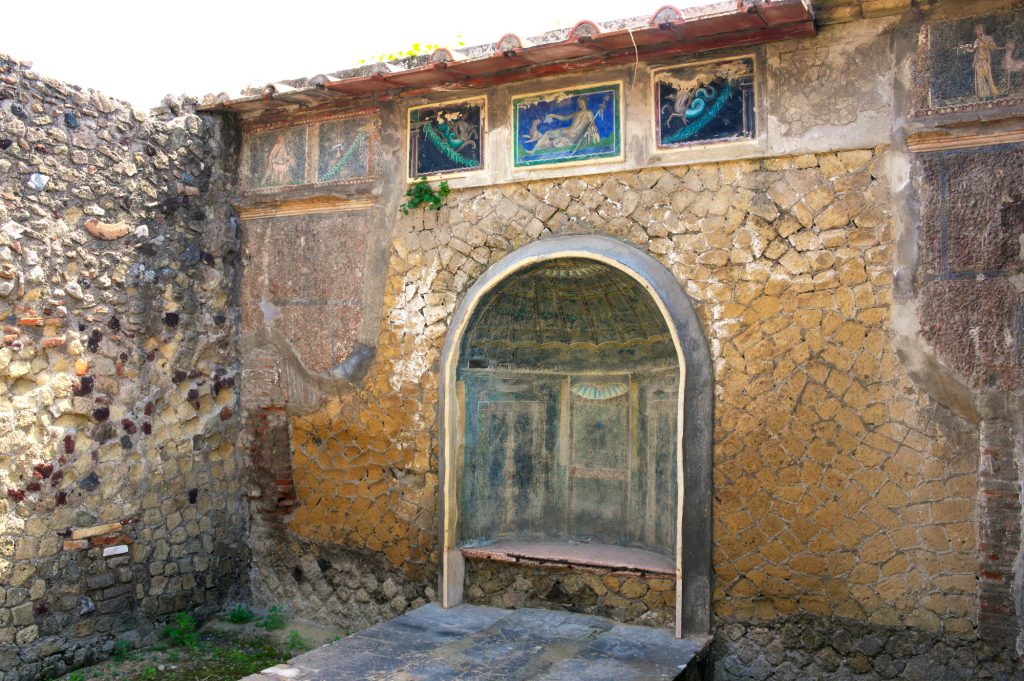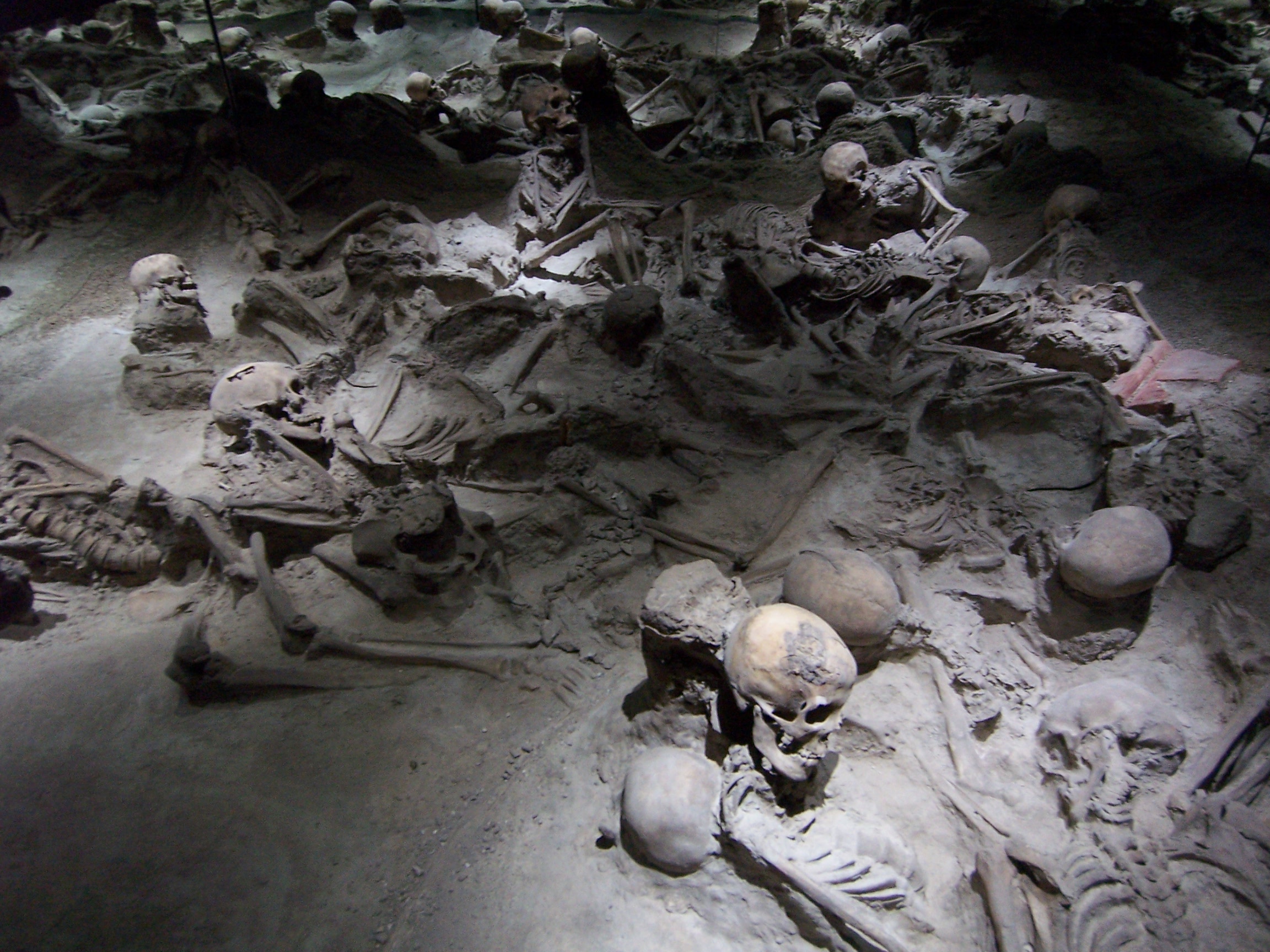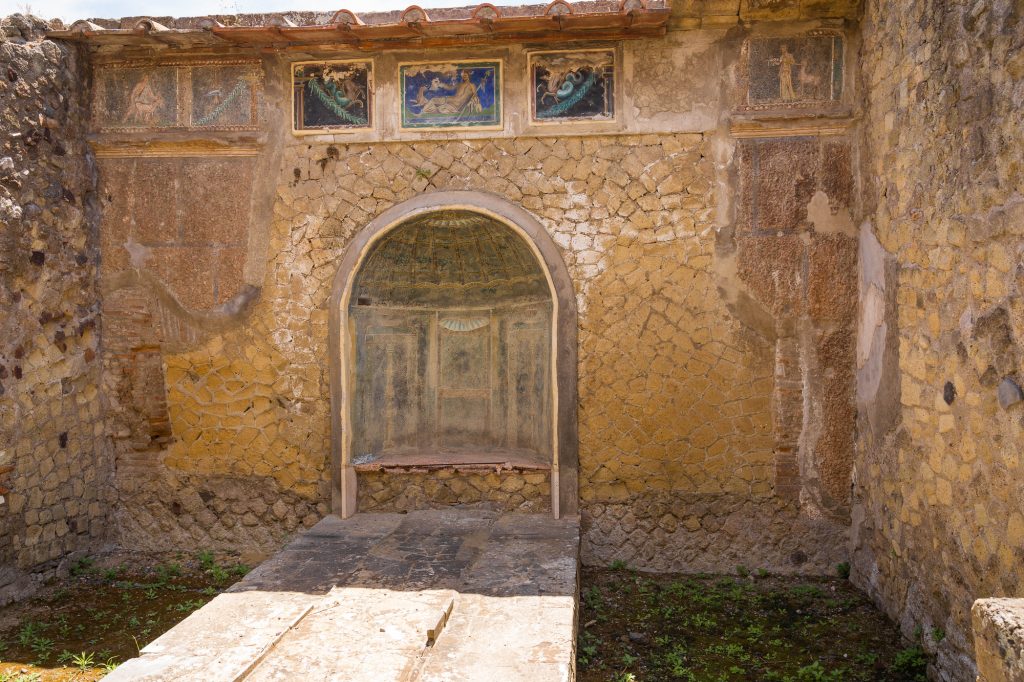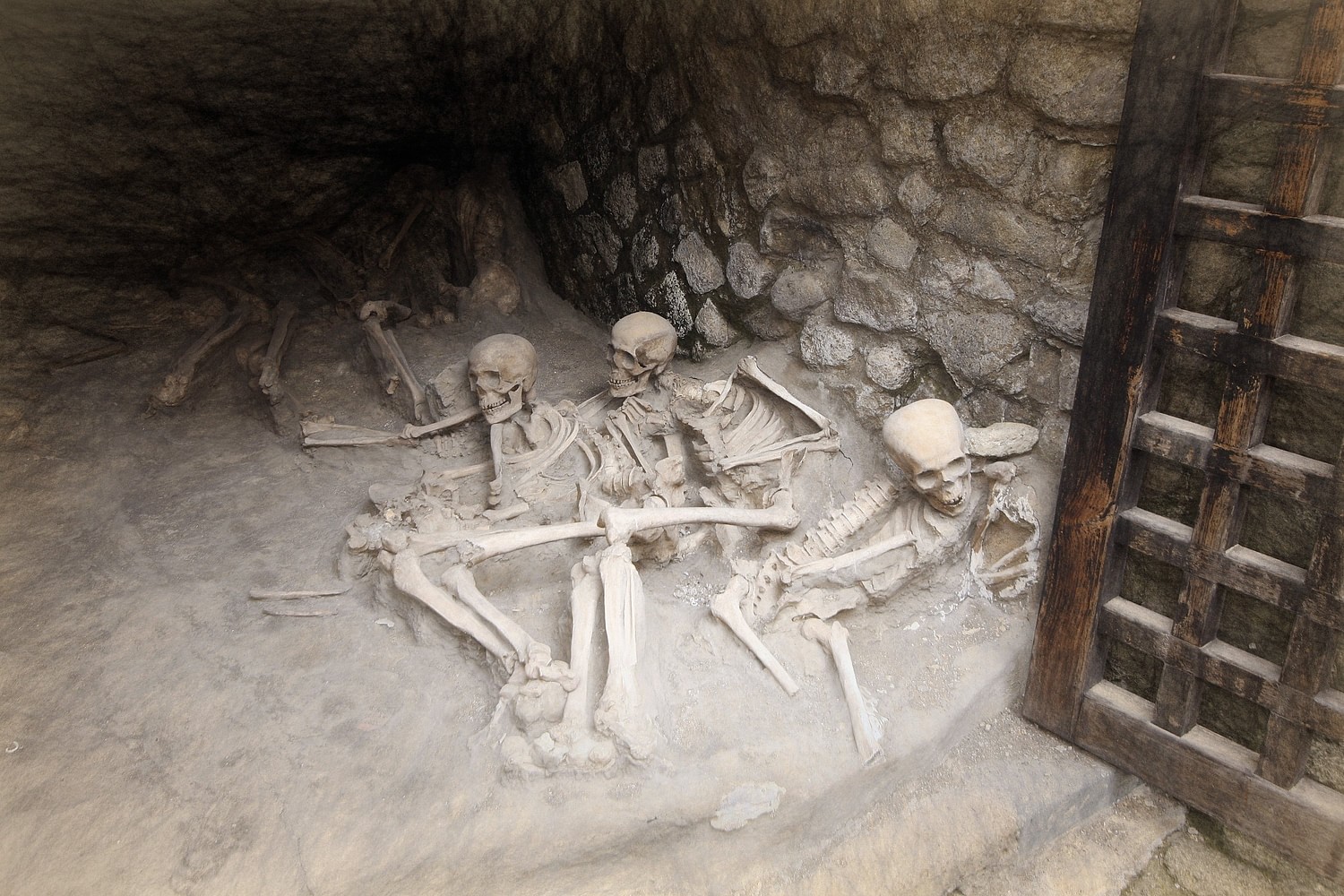The Skeleton House in Herculaneum stands as one of the most evocative and haunting archaeological sites, offering an unparalleled glimpse into the human toll of Mount Vesuvius’ catastrophic eruption in AD 79. Unlike its famous counterpart, Pompeii, which was buried under a thick blanket of volcanic ash, Herculaneum was obliterated by pyroclastic surges—a deadly, high-speed cascade of scorching gas and volcanic material that instantly engulfed the city. This unique and rapid burial process led to an exceptional level of preservation, safeguarding not only buildings and artifacts but also the human remains of those who perished in the disaster.
A Desperate Flight
Located near the ancient shoreline of Herculaneum, archaeologists have uncovered over 300 skeletons, many of which were found clustered together in ancient boat chambers or along the beach. These victims, ranging from young children to elderly adults, had attempted to flee by sea, presumably hoping to escape the eruption by waiting for rescue ships that never arrived. The discovery of their remains, frozen in the final moments of their lives, tells a poignant and tragic story of desperation, fear, and the struggle for survival.

Through analysis of the bones, scientists have gathered invaluable insights into the lives of these individuals. Traces of their diet, including fish, grains, and vegetables, suggest a Mediterranean way of life, where diet and lifestyle were centered around the sea and agriculture. Personal belongings, such as jewelry, coins, and tools, were also recovered with the victims, offering a glimpse into the social diversity of Herculaneum. From wealthy elites to everyday laborers, the items serve as a testament to the wide-ranging demographics of the city’s population.
Unprecedented Preservation
The pyroclastic flows that buried Herculaneum reached scorching temperatures exceeding 500°C (932°F), a force so powerful that it vaporized organic material almost instantaneously. However, the rapid cooling and dense volcanic deposits that followed played a crucial role in preserving not only the city’s buildings but also its inhabitants in extraordinary detail. Unlike the more fragmented remains found in Pompeii, the bones of Herculaneum’s victims were encased in solidified volcanic material, which acted as a protective barrier, preventing the usual processes of decomposition and scavenging.

This rare and exceptional preservation provides researchers with an unprecedented opportunity to study the physical condition of the victims, revealing details about their health and even their emotional states. The preserved bones, along with the personal items found nearby, offer a remarkable snapshot of Roman life at the moment of its destruction, allowing historians to better understand the daily lives, health, and fears of the people who lived there.
The Legacy of the Skeleton House
The Skeleton House is not just a grim reminder of death; it is also a powerful symbol of life interrupted. The site stands as a testament to the fragility of human existence in the face of nature’s overwhelming power. While the eruption of Mount Vesuvius was one of the most devastating natural disasters in history, the preservation of Herculaneum offers us a unique opportunity to connect with the individuals who lived in the city—individuals who experienced the same basic desires, fears, and struggles that define the human condition.

Today, the Skeleton House serves as a poignant reminder of the personal stories lost to time, highlighting the intersection of life, death, and nature. It invites visitors to reflect on the suddenness with which life can change, as well as the resilience of the human spirit in the face of unimaginable hardship.

Herculaneum, often overshadowed by Pompeii in terms of public attention, stands out through the tragic yet profoundly moving discovery of the Skeleton House. This site transcends its role as an archaeological excavation and becomes a place of reflection—a space where the lost lives of the past echo through time, reminding us of the timeless bond between the people of antiquity and ourselves. Through these remains, we are invited to witness their final moments and to honor their enduring stories, connecting us to a world lost but never forgotten.

